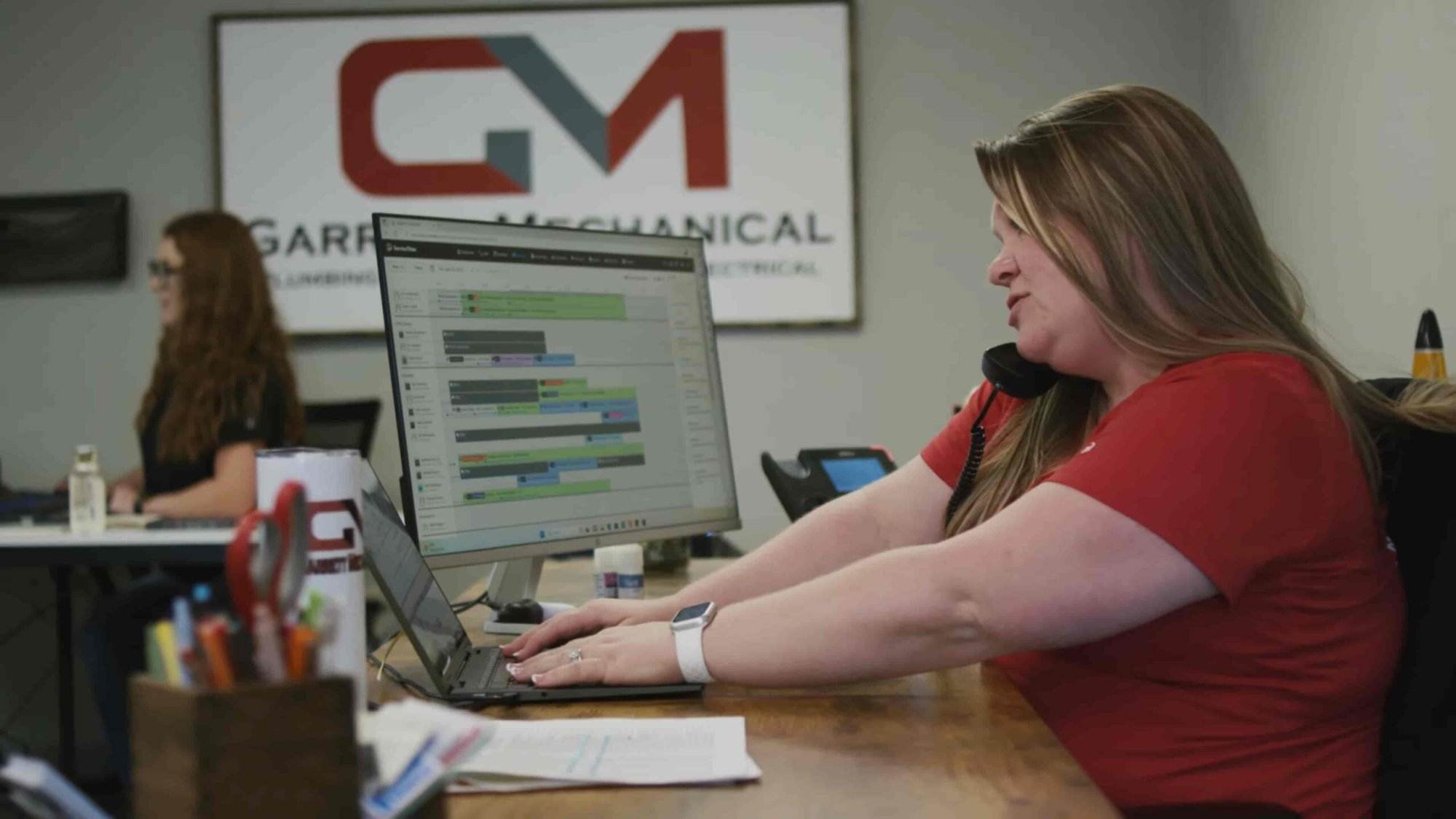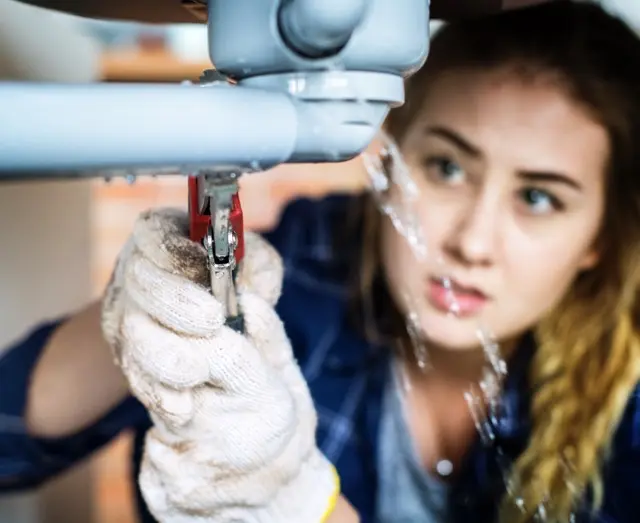Disclosure: This post contains affiliate links and I will be compensated if you make a purchase after clicking through my links. Learn More
Imagine this: you’re enjoying a peaceful evening at home when suddenly, you hear the unmistakable sound of rushing water. Panic sets in as you realize a pipe has burst, threatening to flood your living space.
In that moment, knowing exactly what to do can save you from stress, costly repairs, and potential damage to your belongings. This guide is crafted just for you, offering simple, actionable steps to handle a burst pipe emergency swiftly and efficiently.
By the end of this article, you’ll feel empowered to tackle this common household crisis with confidence. Ready to turn chaos into calm? Let’s dive in.
Identifying A Burst Pipe
Spotting a burst pipe involves listening for unusual water sounds and checking for damp walls or ceilings. Quick action is key to minimizing water damage. Turn off the main water supply and call a plumber immediately for professional help.
Identifying a burst pipe can be a stressful ordeal. Knowing what to look for can save you time, money, and prevent extensive damage to your home. Imagine waking up to a waterlogged carpet or hearing a mysterious hissing sound coming from your walls—these could be telltale signs of a burst pipe. So, how can you spot one before it wreaks havoc?
Signs Of A Burst Pipe
A sudden spike in your water bill can be a red flag. If you’re using water the same way you always have, but your bill is unusually high, a leak might be the culprit. You may notice water stains on your walls or ceiling. These stains can appear quickly and may even change color, indicating water damage. Another sign is a drop in water pressure.
If your shower feels weak or your sink takes forever to fill, it might be time to investigate further. Are there unusual sounds coming from your plumbing? Sounds like banging or whistling could be more than just a minor issue—they might signal a burst pipe.
Common Causes
Extreme weather conditions can lead to pipes bursting. Cold temperatures can freeze water inside the pipes, causing them to expand and crack. Corrosion from old pipes is another common cause. If your plumbing system is outdated, it might be time for an upgrade to prevent unexpected breaks. High water pressure can strain your pipes. If the pressure is too high, it could lead to a rupture, especially in older systems. Tree roots can infiltrate your pipes.
While it might sound surprising, those roots can grow into your plumbing and cause significant damage. Have you ever thought about how these issues could affect your home? Identifying these signs and causes early can be your best defense against a burst pipe emergency. What steps will you take to safeguard your home?

Credit: garrett-mechanical-plumbing.s3.us.cloud-object-storage.appdomain.cloud
Immediate Actions To Take
Dealing with a burst pipe can be overwhelming. Taking quick action is crucial. Immediate steps can prevent more damage. Here’s what to do when a pipe bursts.
Shutting Off Water Supply
First, find the main water valve. It’s usually in the basement or near a utility room. Turn the valve clockwise to stop the water. This prevents more water from leaking. If you rent, call your landlord. They might know the exact location. Stopping the water quickly reduces damage.
Electrical Safety Precautions
Water and electricity don’t mix. Check if water is near any outlets. If it is, don’t touch anything. Go to the main electrical panel. Turn off the power for safety. If you can’t reach it safely, call an electrician. Avoid using electrical devices near the water. Safety first to prevent shocks.
Minimizing Water Damage
Facing a burst pipe? Act quickly to minimize water damage. Turn off the water supply immediately. Move valuables to a safe area. Call a professional plumber to repair the pipe. Use towels to soak up excess water. Ensure good ventilation to dry the area faster.
Prevent mold growth with prompt action.
A burst pipe can turn your cozy home into a waterlogged nightmare. Swift action is crucial to prevent extensive damage. Once you’ve stopped the water flow, the next step is minimizing water damage. This involves removing water efficiently and ensuring the area dries properly. Let’s dive into some practical strategies that can help you keep your home safe and sound.
Water Removal Techniques
First things first, get rid of standing water. You don’t need fancy equipment to start—grab a mop, bucket, or towels. If you have a wet/dry vacuum, it’s a lifesaver. Bailing out water manually is exhausting but effective. Once the bulk is gone, switch to the vacuum for the remainder. You might consider renting professional-grade pumps if the flooding is severe. These can quickly remove large volumes of water, saving precious time.
Drying And Ventilation
After water removal, drying is key. Open windows and doors to let fresh air circulate. This simple step accelerates drying and helps prevent mold growth. Fans and dehumidifiers are your best friends here. Place them strategically to maximize airflow. It’s surprising how much difference a few hours of ventilation can make. Check hidden areas like under carpets and behind furniture.
These spots can trap moisture, leading to structural damage. Are you noticing damp smells days later? You might have missed a spot. By tackling water removal and drying effectively, you can protect your home from lasting damage. Remember, quick actions can make all the difference in a water emergency.

Credit: superiorplumbing.net
Temporary Pipe Repair Solutions
A burst pipe can create chaos in any home. Immediate action is crucial. Knowing temporary repair solutions helps manage the situation quickly. These solutions buy time until professional help arrives. Let’s explore some effective temporary pipe repair methods.
Using Pipe Clamps
Pipe clamps are essential for quick fixes. They stop leaks efficiently. First, locate the leak’s exact spot. Ensure the area is clean and dry. Position the pipe clamp over the leak. Tighten it securely using a screwdriver. This reduces water flow instantly.
Pipe clamps are available at most hardware stores. They are easy to install and remove. Keep a few in your home for emergencies. They are a simple, yet effective solution.
Applying Epoxy Putty
Epoxy putty is another excellent temporary fix. It hardens quickly and stops leaks. Start by cleaning the pipe surface. Ensure it’s free from dirt and moisture. Cut a small piece of epoxy putty. Knead it until it’s a uniform color.
Press the putty onto the leak. Mold it around the pipe for a snug fit. Allow it to cure for the recommended time. This creates a solid seal over the leak. Epoxy putty is handy for small leaks. It’s easy to use and sets fast.
Contacting Professional Plumbers
Dealing with a burst pipe can be overwhelming. You need quick and efficient help. Contacting professional plumbers is crucial in this situation. They have the expertise to manage the emergency. Immediate action minimizes water damage and repair costs.
Choosing The Right Service
Not all plumbing services are equal. Research local plumbers before an emergency occurs. Look for licensed and insured professionals. Check online reviews and ratings. Ask friends or neighbors for recommendations. Choose a service with 24/7 availability. Emergencies don’t wait for business hours.
What To Expect During A Repair
Once the plumber arrives, they will assess the damage. They’ll identify the burst pipe’s location. Expect them to explain the repair process. They should provide an estimate of the costs involved. Repairs may involve replacing damaged sections. The plumber will ensure proper sealing and testing.
After the repair, they might offer advice. Tips on preventing future incidents are common. You might learn how to better insulate pipes. Regular maintenance suggestions are also typical. Clear communication and expertise are key during repairs.
Preventive Measures For Future
Preventive measures can save you from future burst pipe emergencies. Taking proactive steps can protect your home. It also saves money and stress. Simple actions can make a big difference.
Insulating Pipes
Insulate pipes to prevent freezing in cold weather. Use foam sleeves or pipe wrap tape. Focus on pipes in unheated areas. Insulation helps maintain temperature. It reduces the risk of pipes bursting. Check insulation regularly for wear and tear.
Regular Maintenance Checks
Conduct regular maintenance checks on your plumbing system. Look for signs of leaks or corrosion. Tighten any loose fittings. Replace worn-out parts promptly. Regular checks ensure your pipes remain in good condition. Schedule professional inspections annually.
Insurance And Financial Considerations
Quickly address a burst pipe emergency by contacting your insurance provider. Understand coverage details to ease financial burdens. Familiarize yourself with repair costs and payment options to manage expenses effectively.
Dealing with a burst pipe can be stressful. The damage can be costly. Knowing how insurance works is vital. This can ease the financial burden. Let’s delve into understanding coverage and filing a claim.
Understanding Coverage
Check your homeowner’s insurance policy. It usually covers burst pipes. But, not all damages might be included. Policies differ in coverage details. Review your policy documents carefully. Note any exclusions or limitations. Often, sudden and accidental damage is covered. Long-term leaks might not be. Always clarify with your insurer. Ask questions if something is unclear.
Filing A Claim
Once a burst pipe is found, act quickly. First, document the damage. Take clear photos and videos. This evidence is crucial. Then, contact your insurance provider. Report the incident promptly. They will guide you on next steps. Understand the claim process fully. Keep all receipts and repair estimates. These will support your claim.
Stay in touch with the insurance adjuster. Ensure all paperwork is completed correctly. Handling a burst pipe can be daunting. But, informed actions can save you money. Understanding insurance and filing a claim are key steps. `
Final Words
Handling a burst pipe can feel overwhelming. Quick action is crucial. Turn off the main water valve immediately. Protect your belongings from water damage. Call a professional plumber for help. They have the right tools and expertise. Regular maintenance can prevent future pipe issues.
Check for leaks often and fix them quickly. Prepare an emergency kit with essential supplies. This includes towels, buckets, and a flashlight. Stay calm and focused during the crisis. With these steps, you can tackle a burst pipe emergency effectively.
Your home will be back to normal soon.


